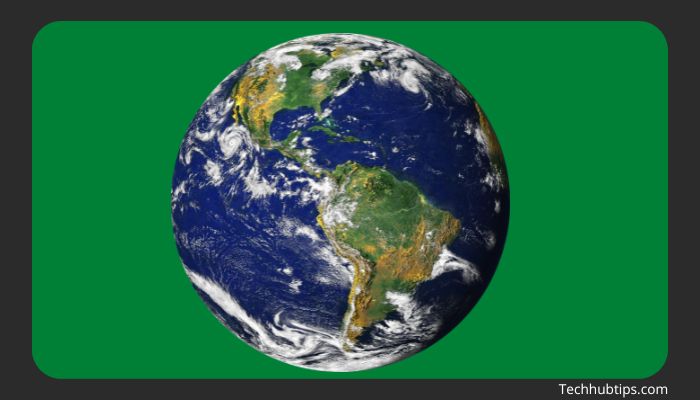The sun is the heart of the solar system and the Earth’s closest star, as well as its only life-giving star. It is a ball of hot plasma, consisting of electrons and protons, with a mean temperature of 6,500 K (10,340° F). It is about three-quarters hydrogen and one-quarter helium by mass. Today, we will discuss in details on this topic how many earths can fit in the sun.
Its outer atmosphere has four layers: the photosphere; the chromosphere; the transition region; and the corona. The solar atmosphere above it contains an intricate system of magnetic fields that produce sunspots and solar flares.
The Sun is most probably a second-generation star, with a diameter that is half of its parent star the Galaxy progenitor. The Galaxy progenitor possibly exploded as a supernova, producing the heavier elements, then condensed into a second-generation star with a diameter about 90 times bigger than its parent star. The exploded parent star became the solar nebula from which all the planets condensed.
Table of Contents
How many earths fit in the sun?
The sun’s diameter is 1.3927 million km or 865,370 mi. The Sun is 330.000 times more massive than earth. Knowing this data will make you wonder how many Earths can fit in the sun. The answer is over a million. This type of question is very common in science tests. It needs a massive calculation to answer.
For this reason, it is going to be difficult to figure out the number of Earths that fit in the Sun. However, some interesting aspects can be derived from this information. The mass of the Earth is 6,016 times less than that of the Sun, so one can assume that our planet fits within its volume half as often as it would fit within a sphere with half its diameter.
If we know this much about our planet, what about the rest?
Mercury, Venus, and Mars
Mercury is our Solar System’s smallest planet, with a diameter of only 4.879 km / 3.032 mi, a radius of 2.439 km / 1.516 mi, and a mass of only 0.055 Earth masses. Venus has a diameter of 12.104 km / 7.521 mi and a radius of around 6.051 km / 3.760 mi, making it the sixth-largest planet from the Sun. Let’s move on to Mars. Mars is the Solar System’s second-smallest planet, with a diameter of only 6.779 km / 4.212 mi (30% larger than Mercury) and a radius of 3.389 km / 2.105 mi.
Statistically, we are talking about more than 21.2 million Mercury-sized planets, 1.5 million Venus-sized planets, and around 7 million Mars-sized planets that would fit in the sun.
Jupiter and Saturn
Our solar system is home to the three gas giants – Jupiter, Saturn, and Neptune. They all have diameters larger than that of the Earth’s orbit by a factor of more than 1000. The biggest planet in our solar system is Jupiter with a diameter of 139,820 km / 83.082 mi (11 times larger than that of the Earth) and a mass of 1.898 × 10^27 kg or 317 times heavier than Earth.
Saturn has a diameter of 58.232 km / 36.183 mi (9.4 times larger than that of the Earth) and a mass of 5.683 × 10^26 kg (1.4 times more massive than Jupiter).
When we see how many of these planets are in the sun, compared to the three above it is significantly lower. Around 1.000 Jupiter-sized planets and more than 1,700 Saturn-sized planets can fit in the sun.
Uranus, Neptune
Our solar system is home to two ice giants – Uranus and Neptune. They have diameters larger than that of the Earth’s orbit by a factor of more than 2000. They have the most eccentric orbits over all the planets in our solar system, with one being roughly 0.5 AU from the Sun at perihelion and about 30 AU at aphelion (the farthest point in their orbits).
Uranus has a diameter of 51.118 km / 31.763 mi (9 times larger than that of the Earth) and a mass of 8.681 × 10^25 kg or 317 times heavier than Earth. Neptune is 49.244 km / 30.598 mi (6.4 times larger than that of the Earth) and has a mass of 1.024 × 10^26 kg (8 times less massive than Uranus).
Considering Uranus to be only several thousand Neptune-sized planets, around 22.000 Uranus-sized planets, and more than 1,800 Neptune-sized planets would fit in the sun.
Pluto
Moving on to Pluto, we have Pluto, which is probably the most disputed planet in our solar system. But its diameter is around 2.376 km / 1.476 mi, making it the largest known dwarf planet in the Solar System.
Since there are several dwarf planets beyond Pluto, it is nearly impossible to calculate how many planets there would be. We can only estimate it to be more than 200 million. One thing is for sure, though – there are more than a million Earth-sized planets that could fit in the sun.

